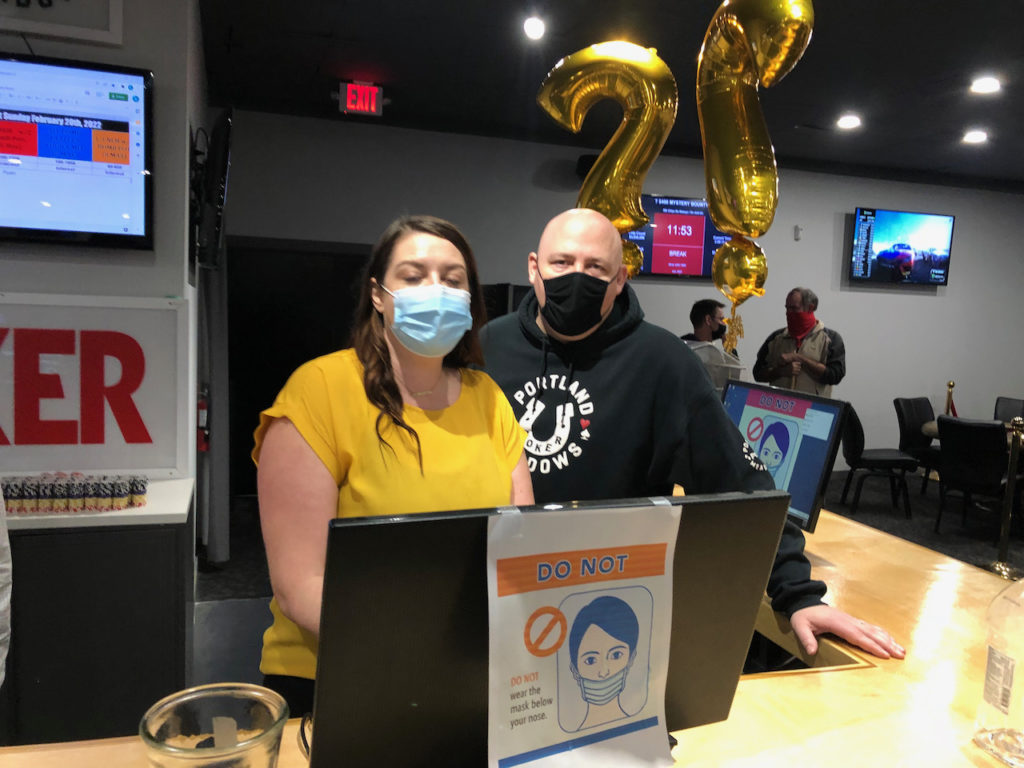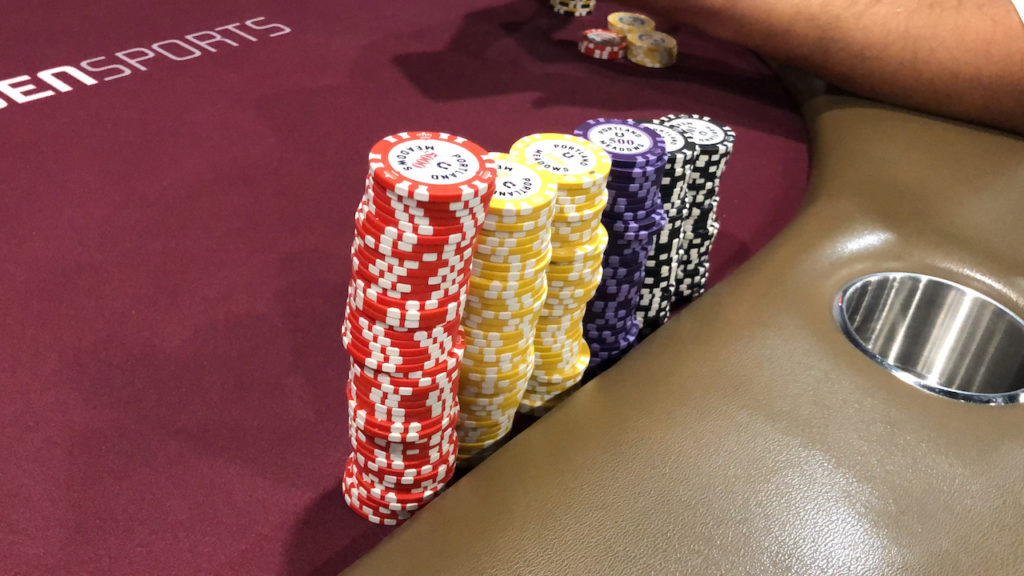Pacific Northwest Poker Leaderboard
Just a few results after the deluge of WSOP Circuit stuff last time. Picking up three good cashes from the Venetian DeepStack Extravaganza I.
Vancouver, Washington provided the winners of two of those numbers.
David Moshe was the winner of the Venetian DSE #7 $40K GTD NLHE MonsterStack, in an even 2-way chop. There were 130 entries in the tournament, and it posted a prize pool of $66K.
The other Vancouvian on the board this week was Christopher Hull, who was 2nd in a 2-way chop in a similar tournament, the Venetian DSE #13 $40K GTD NLHE MonsterStack, this one with 154 entries.
The third and final result for this edition is from Victoria: Dominick French was 2nd in Venetian DSE #1 $100K GTD NLHE UltimateStack, which was also chopped two ways, with 468 entries and a prize pool of $154K.

Portland Meadows NLHE Mystery Bounty
I hadn’t played live poker since before Christmas, so I was champing at the bit when Brian Sarchi announced the first Mystery Bounty tournament in the area a couple of weeks ago. I’m always interested in trying out something different, and I kind of figured I needed to get my poker legs back before heading to Chinook Winds for the PacWest Poker Classic next month.
Because parking’s always tight, I meant to take the bus over Sunday morning but since I didn’t get going early enough, I hopped over in the Mutantmobile. The lot was already full a half-hour before the show, so I ended up in the Comcast parking lot down the street.
Unlike a regular bounty tournament, where you get a set value for each player you knock out, the mystery bounty format only pays out when players are already in the money. So there’s no potential for saving yourself with bounties if you don’t cash. You’ve got to make it into the money yourself to get any bounties (and even then you’re not guaranteed).

This tournament was paying 15% of the field, which meant 15% of the players would have bounties on their heads. When the field gets down to the money, each of the remaining players gets a bounty chip, and when you knock someone out and take their bounty chip, you get a chance to draw an envelope from the lottery drum and find out how much your the bounty is worth: in this case, anywhere from $400 (the price of entry) to $5,000.

My table started looking rough at the very beginning, as Sam Nguyen sat down in seat 3 and Jackie Burkhart popped into seat 2, with Toma Barber showing up a little after things started in seat 1. I was sitting in 5 (not to give short shrift to the other end of the table, but I’ve been out of the loop for a while and didn’t recognize everyone, particularly with masks on).
The person I (and everyone else) needed to watch out for was seat 4 who, after a bit of a lull early on, went on a tear, knocking out player after player and amassing a stack of chips that was approximately 10% of the chips in play while we were still 54-handed (44% of the original field).
It made for some nail-biting calls, when I’d get involved, some action would raise the stakes, and seat 4 would move a handful of red chips into play, essentially putting anyone involved in the hand all-in.He cleared out short stacks and some big stacks, like a poker Katamari Damancy.

The first couple of levels didn’t go so well. My stack slid down from the 30K start to just over 20K, then in level 3, I managed to spin it up to nearly 80K, knocking out Toma (sadly) in the process. Ran some queens into aces and lost more than half my stack not long after registration had closed, though I did almost get bailed out with a spade flush on the board.
By round 8, eight players had been eliminated from our table. Toma was one, but the other seven were all part of the stack on my right. I was nursing the approximately 40K I had left after my setback, and just about half the 121 entries had been eliminated.
I was still below the 67K average with less than 30bb as we went to level 9, with a 2K big blind. I chipped up a little bit—even getting a laydown from the big stack—as we closed in on the end of the fifth hour of play.
The first big hand for me was in UTG+1. The big stack raised and I 3-bet A♣ Q♣. People got out of the way of the next casualty and we got the money all in, with the big stack holding 8♣ 8♠. I made trip aces on the flop, but the middle card was an 8♥, giving him a full house. I was resigned to my fate, but on the river came a Q♥ for a better full house and I doubled up to more than 130K, which was probably enough to get me close to the money, since we were down to around 40 players, with 18 places paying.

I should have left myself in resignation mode, though. Just a few hands later, I had kings and 3-bet seat 4. He called and we were heads-up to the queen-high flop, where we got all-in and I was up against aces again. And lost again, but this time didn’t have any chips left. I probably should have been able to get away, even with kings, and if it had been any other player, maybe i could have; there just wasn’t any way to do it against that big stack.
That was my Mystery Bounty experience. Sam outlasted me, as did Darin Stout who came to the table a level or two before I left. Brian says he’s planning to run something like this again soon, which should be entertaining. My reccomendation would be to adjust a couple glitches in the payout structures. The curve for the position payouts should be adjusted on the bottom so the bottom payouts are at least a little more than the buy-in ($400, in this case). It’s not a huge adjustment to the curve to backfill some of the lower payouts.

Likewise, the Mystery Bounty amounts ought not to have jumps of $100, $500, $500, $1000, $1000, $500, $1000. The interval should always increase!

That’s it for live for me until next month.




